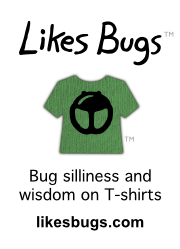On September 2, two days after my visit to Lake Tawakoni, I posted a summary of my observations to TX-ENTO, an entolomology listserv run by Mike Quinn. We were trying to solve the mystery of what was making the web. Was it a spider or something else? If spiders were making the web, which spider? And why?
There were many different kinds of spiders in the web. In order of how common they appeared to be, most common first, I saw long-jawed orbweavers (Tetragnathids), jumping spiders (Salticids), dewdrop spiders (Theridiids, Argyrodes sp.), orbweavers (Araneids), funnel spiders (Agelenids), and wolf spiders (Lycosids). I even found a pirate spider in the web (Mimetid). Pirate spiders primarily feed on other spiders—no wonder they were roaming the web. (Arachnologist Hank Guarisco would later add the social cobweb spider Anelosimus studiosus to this list, but they were in small numbers.)
Was it one of these spiders? Or some other spider we didn’t see? Mike had collected umpteen spiders for Allen Dean at Texas A&M University to identify. If some unusual spider showed up in the mix, we might have a good clue about which critter was making the web. Several arachnologists seemed certain that some out of place tropical spider would prove to be the culprit.
But in my opinion, there was plenty of evidence to be gleaned simply by looking at the web and the spiders it. (I was a bit frustrated that at this point no arachnologists were planning to see the web in person). First, we could confidently rule out the spiders that were in the web that don’t make webs to catch prey. These were the jumping spiders, wolf spiders, and pirate spiders. They were in the web to catch the other spiders in the web or perhaps to catch insects caught in the web.
That left us with the long-jawed orbweavers, the dewdrop spiders, and the funnel spiders. There was already a theory on the table that some sort of funnel spiders were making the web, since funnel spiders can make large sheets. There were plenty of funnel spiders, but I was able to clearly locate their webs. Funnel spiders make webs that lay over vegetation, while the webs at Lake Tawakoni were shrink-wrapping vegetation and more often traversing underneath the vegetation than over it. Most of this web just didn’t look like funnel web.
Dewdrop spiders tend to make sparse webs that cling to the webs of other spiders, so we could easily explain them away as being there because of the web. That left only the long-jawed orbweavers. On August 31st, there were easily hundreds of long-jawed spiders to each funnel spider. And the long-jawed spiders were in the unusual webs, while the funnel spiders were not.

The main problem was that the long-jawed orbweavers are supposed to be making orb webs, but few of these were in orb webs. An orb web is the kind of web made by Charlotte in E.B. White’s Charlotte’s Web, the one with a spiraling center. These long-jawed orbweavers were on sheets and in dense tangles. In some places I estimated as many as 8 spiders per square foot on a sheet and as many as 30 in a cubic foot in the dense tangles. That’s a lot of spiders in the wrong web.
One possibility was that the long-jawed spiders were using some other spiders web. But then we would have two problems to solve: (1) which spider was making the web, and (2) why weren’t the long-jawed spiders making any webs? It just seemed simpler to assume there was only one mystery: why were the long-jawed spiders making this unusual web?
The mystery was still unresolved. At this time I had not seen the spiders making the web. But I would eventually see who exactly was making the web and how.



